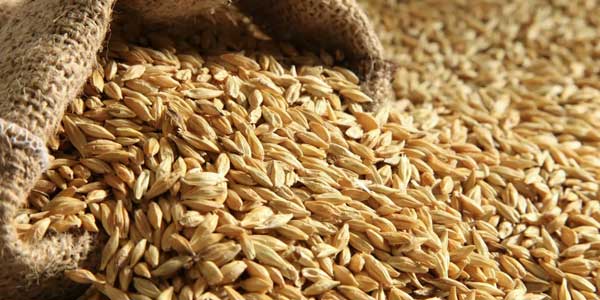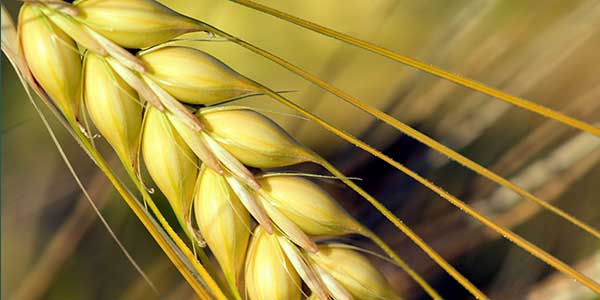Introduction
Barley, also known as pearled barley or jaun, is a versatile grain that has been cultivated for thousands of years. It is one of the oldest cultivated grains and has a rich history as a staple food in various cultures. Barley offers a range of culinary possibilities and is known for its nutty flavor and chewy texture. In this article, we will delve into the details of barley as a cooking ingredient, including its uses, qualities, origin, sources, applications, health benefits, use in cooking, and potential side effects.
Origin and Sources
Barley has a long history dating back to ancient times. It is believed to have originated in the Fertile Crescent region of the Middle East. Today, barley is cultivated in many parts of the world, including Europe, North America, Australia, and Asia. It is a hardy crop that can thrive in diverse climates, making it a versatile and widely available grain.
Qualities of Barley: Barley is a nutritious whole grain that offers several qualities that make it a valuable cooking ingredient. It has a mild, nutty flavor and a chewy texture when cooked, which adds depth and variety to dishes. Barley is also a good source of dietary fiber, vitamins, minerals, and antioxidants. It contains nutrients like fiber, protein, manganese, selenium, phosphorus, and magnesium, which contribute to its overall nutritional value.

Uses and Applications
Barley can be used in various forms, including whole grain, hulled, pearled, or ground into flour. It is a versatile ingredient that can be incorporated into a wide range of dishes. Here are some common uses and applications of barley in cooking:
- Soups and Stews: Barley is often used in hearty soups and stews. Its chewy texture and ability to absorb flavors make it an excellent addition to dishes like barley soup, beef barley stew, or mushroom barley soup.
- Salads: Barley can be cooked and added to salads for added texture and nutritional value. It pairs well with vegetables, herbs, and dressings, making it a nutritious and filling ingredient in grain salads.
- Pilafs and Side Dishes: Barley can be cooked with aromatic spices, vegetables, and broth to create flavorful pilafs and side dishes. It can be used as a substitute for rice or other grains in various recipes.
- Baking: Barley flour, which is ground from the grain, can be used in baking. It adds a nutty flavor and can be incorporated into bread, muffins, cookies, or other baked goods.

Health Benefits of Barley
Barley offers several health benefits due to its nutritional composition. Here are some potential health benefits associated with consuming barley:
- High in Fiber: Barley is a good source of dietary fiber, including both soluble and insoluble fiber. Soluble fiber can help lower cholesterol levels and regulate blood sugar levels. Insoluble fiber promotes healthy digestion and helps prevent constipation.
- Heart Health: The fiber content, along with other nutrients in barley, can contribute to heart health. It may help reduce the risk of heart disease by lowering cholesterol levels, managing blood pressure, and promoting overall cardiovascular health.
- Weight Management: The fiber and protein content of barley can promote feelings of fullness and aid in weight management. It helps control appetite, reduces calorie intake, and supports healthy digestion.
- Blood Sugar Control: Barley has a low glycemic index, which means it doesn’t cause a rapid increase in blood sugar levels. It may help regulate blood sugar levels and improve insulin sensitivity, making it beneficial for individuals with diabetes or those at risk of developing diabetes.
- Gut Health: The fiber in barley acts as a prebiotic, supporting the growth of beneficial bacteria in the gut. This can contribute to a healthy gut microbiome, improved digestion, and overall gut health.
- Nutrient-Rich: Barley contains various vitamins, minerals, and antioxidants that support overall health and well-being. These include manganese, selenium, phosphorus, magnesium, and B vitamins.
Use in Cooking: Barley can be cooked in several ways depending on the desired dish. Here’s a basic method for cooking pearl barley: - Rinse the barley under cold water to remove any debris.
- In a pot, combine one part barley with three parts water or broth.
- Bring to a boil, then reduce the heat to low and cover the pot.
- Simmer for about 30-40 minutes or until the barley is tender and chewy.
- Drain any excess liquid and fluff the barley with a fork before using it in your desired recipe.
Side Effects and Precautions
Barley is generally safe for most people when consumed in moderation. However, some individuals may have specific sensitivities or allergies to barley. Additionally, individuals with celiac disease or gluten intolerance should avoid barley or opt for gluten-free varieties. It’s important to read food labels and choose certified gluten-free barley if necessary.
Barley for weight loss
Barley can be a helpful addition to a weight loss diet due to its unique nutritional profile and benefits. Here are some ways in which barley can support weight loss efforts:
- High in Fiber: Barley is rich in dietary fiber, with both soluble and insoluble fiber. The high fiber content helps promote feelings of fullness and satiety, which can reduce overall calorie intake and prevent overeating. Including barley in your meals can help you feel satisfied for longer periods and curb unnecessary snacking, aiding in weight management.
- Low Glycemic Index: Barley has a low glycemic index, which means it causes a slower and steadier rise in blood sugar levels compared to refined grains. Foods with a low glycemic index can help control blood sugar levels and prevent spikes and crashes in energy levels. Stable blood sugar levels can contribute to reduced cravings and better appetite control, supporting weight loss efforts.
- Nutrient Density: Barley is packed with essential nutrients while being relatively low in calories. It contains vitamins, minerals, antioxidants, and phytochemicals that are beneficial for overall health. By incorporating nutrient-dense foods like barley into your meals, you can nourish your body while managing your calorie intake, which is crucial for weight loss.
- Satiating Protein: While barley is not a significant source of protein compared to animal-based protein sources, it does provide a moderate amount. Protein is known to promote satiety and increase feelings of fullness. By including barley in meals that also contain lean protein sources like chicken, fish, or legumes, you can create a balanced and satisfying meal that supports weight loss.
- Replacement for Refined Grains: Barley can be used as a healthier alternative to refined grains like white rice or pasta. By substituting these refined grains with barley, you can increase your fiber intake and reduce the overall calorie density of your meals. This can help create a calorie deficit necessary for weight loss.
- Versatile and Filling: Barley’s chewy texture and nutty flavor can add depth and variety to your meals. It can be incorporated into a range of dishes, including soups, salads, pilafs, and even breakfast bowls. By including barley in your meals, you can enhance their nutritional value and make them more satisfying, reducing the temptation to overeat or snack on unhealthy options.

It’s important to note that while barley can be a beneficial addition to a weight loss diet, it is not a magic solution on its own. Sustainable weight loss requires a well-rounded approach that includes a balanced diet, regular physical activity, adequate hydration, and healthy lifestyle habits. Consulting with a healthcare professional or registered dietitian can provide personalized guidance on incorporating barley and other nutritious foods into your weight loss journey.
Conclusion
Barley, or pearled barley (jaun), is a versatile and nutritious grain that offers a range of culinary possibilities. It has a mild, nutty flavor and a chewy texture, making it a popular ingredient in soups, salads, pilafs, and baked goods. Barley is packed with fiber, vitamins, minerals, and antioxidants, which contribute to its potential health benefits. It can support heart health, weight management, blood sugar control, and gut health. However, individuals with specific allergies or dietary restrictions should exercise caution. By incorporating barley into your cooking repertoire, you can enjoy its unique flavor and reap the nutritional rewards it has to offer.